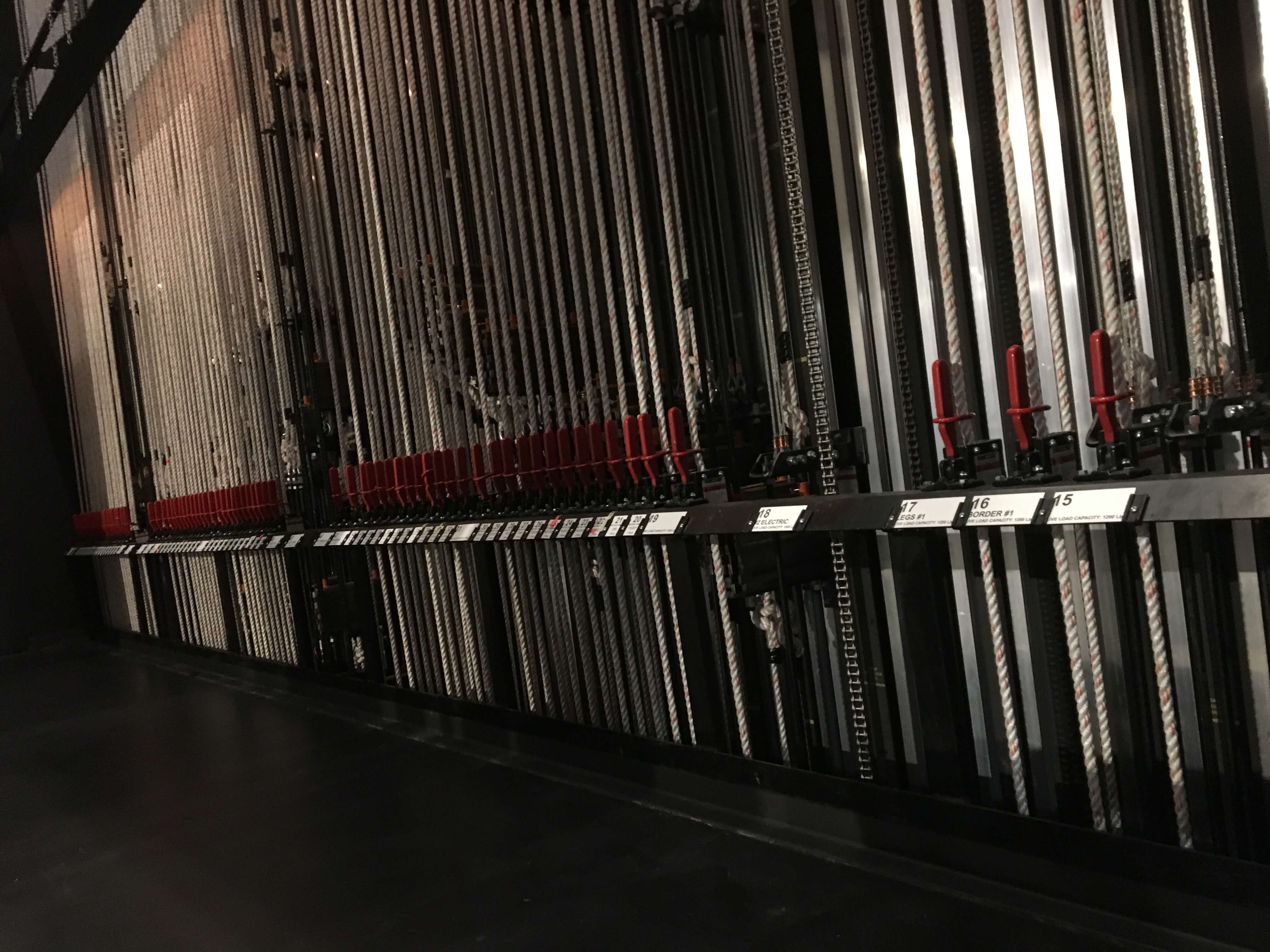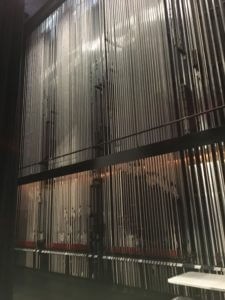Behind the Scenes at the Ives: Rigging
March 1, 2017
Some of the most intriguing aspects of theaters and productions happen behind the scenes. One crucial stage element is the complex system of lines, blocks and counterweights called “rigging” that enable stage crews to manipulate backdrops, curtains, lights and scenery. The impressive rigging system at the Ives Auditorium was custom crafted to accommodate a large and elaborate collection of historic Masonic drops.
The Challenge
That collection numbered 80 drops. Minnesota Masonic Charities purchased the drops, which were painted by Thomas Gibbs Moses in 1901, from the Scottish Rite Valley of Fort Scott Masonic temple in Fort Scott, Kansas after they were forced to close their aging building. In 2015, staff brought the drops back to Minnesota to be used in the Ives Auditorium, then under construction as part of the new Minnesota Masonic Heritage Center.

Fortunately, staff and engineers had already enlarged the original stage plan to meet the needs of Scottish Rite degree work. Whereas an ordinary small theatre might be 28 feet from front to back, workers enlarged the Ives Auditorium stage to a depth of 48 feet from the edge of the front thrust to the back of the stage. In fact, the building had to be extended an additional 10 feet to make room for the newly configured stage.
A typical small theatre like the Ives might have up to 20 lines set for scenery drops. To rig 80 drops even for the enlarged Ives stage took some ingenuity. The original battens – poles onto which curtains or lighting may be affixed – were split wooden battens that were clamped together over the top of each drop to hold it in place. These old battens, many that were warped and in disrepair, had been removed before the drops were transported to Minnesota. They would never have fit into the rigging system we needed.
The Solution
Experts from SECOA, a theatrical rigging company in Champlain, Minnesota that Wenger Corporation acquired in November 2016, came in to help. Working with our staff and the theater designers from Schuler Shook, SECOA’s workers created a custom batten and clamping system to provide space for the historic drops. Part of the solution required a system that allows for just 3 inches of separation between the lines instead of the usual 6 to 8 inches. According to one SECOA worker, the installation wasn’t hard, it just took a long time because there were so many pieces to install for all the drops!

Since the installation, two different dance companies—Ashley Ballet Arts Academy and Dance Endeavors—have performed at the Ives with their own scenery. Singers in Accord used the historic drops in February 2017. These real-life performances have enabled us to fully appreciate how the rigging system, though built to work with our historic drops, is well-suited for modern backdrops too.
Plan a trip to the Heritage Center for an upcoming performance and see first-hand the elegance and ingenuity of the Ives. A list of upcoming events, include the next Ashley Ballet performance–La Fille Mal Gardée—lives at masonicheritagecenter.org/events.




